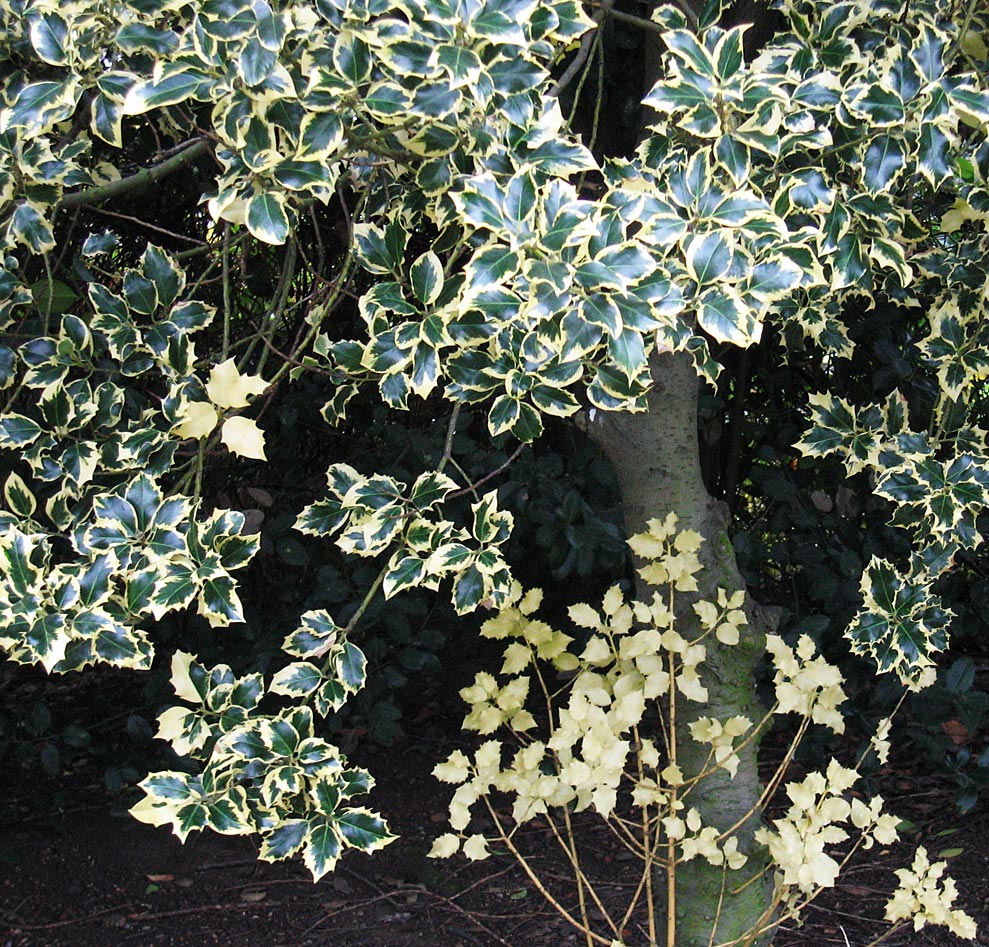Introduction
The genetic composition of a plant species is expressed through its physiological and morphological characteristics. Whether these characteristics are perceived as normal depends on the individual circumstances, and the location where they are found. Some characteristics are considered abnormal. Their appearance is often the result of an abiotic disorder. The following addresses several common abiotic disorders that are biological or botanical in origin.
Genetic Mutations
Genetic anomalies are prevalent in many plant species. For example, seedlings may lack pigmentation, a disorder referred to as albinism. Albino seedlings contain no chlorophyll, which causes them to die off once they have exhausted their energy reserves. Some mutants are able to sustain their growth, eventually reaching maturity. These types of mutants often exhibit unique characteristics. These genetic traits can be reflected in the plant’s growing habit, as well as in its foliage, flowers, stems, and bark. If the characteristics of a mutant are deemed desirable, they may warrant further development and cultivation.
Genetic Reversions
Some mutant cultivars express a tendency to undergo genetic reversion. Initially, they produce shoots that differ from those of the parent species. Eventually, their genetic composition shifts, and the shoots revert to the species type. Genetic reversions are fairly common on dwarf Alberta spruce and Harlequin Norway maple. To retain the plant’s characteristics, genetic reversions should be removed as soon as they are observed.
Chimeras
A chimera is a plant composed of two or more types of genetic tissue. Chimeras are often misconstrued as nutritional or chemical disorders. Leaf variegation in plants is the most common type of chimera. The variance in foliage color, and the banding of those colors is the result of cell mutations in the merismatic tissue layers. Chimeras can be stable, with the genetic variation remaining consistent throughout the plant’s growth. Chimeras that are stable have spawned numerous variegated plant cultivars. Eunymous, hosta, pilea, and holly are four of the most common examples.
Some chimeras are unpredictable, appearing on shoots or leaves at sporadic intervals. Bumald spireas are known to produce unstable leaf chimeras. How stable a chimera becomes is determined by the tissue layer in which the mutation occurs.
Leaf Abscission
Leaf abscission, often referred to as leaf drop, can occur on deciduous and evergreen plants. On deciduous plants, leaf drop transpires naturally in fall, triggered by seasonal changes in temperature and day length. Leaf drop may occur prematurely on plants that are stressed due to a structural weakness, or a disorder. When a plant is stressed, the chlorophyll in the leaves degrades, causing an abscission layer to form at the base of the petiole. In evergreen species, needles will typically function for two to three years. A yellowing or browning of the needles, and abscission develops within the stems on two to three year old tissue. A yellowing or browning on the shoot tips is symptomatic of a disorder.
Leaf Retention
If a stem or leaf is injured, or dies back before fall, abscission layers will not form, and the leaves will remain on the stem. Leaves that linger on a tree throughout fall and winter are indicative of a stem or leaf disorder. Stems may be girdled by an insect borer or mechanical injury. Over time, this can impede the plant’s vascular system, often resulting in stem death, and leaf retention. Frost that occurs prior to the formation of the abscission layer can cause the dead leaves to be retained through the winter. Leaves that are retained by the plant are called marescent leaves. In some deciduous plant species, leaf retention is a natural characteristic. Common examples include oak, beech, hornbeam, and several species of willow. On these species, leaves will not fall until the following spring, when bud break occurs.
Image captured by Andrew Dunn, and available for reuse under the Creative Commons Attribution-Share Alike 2.0 Generic license.
